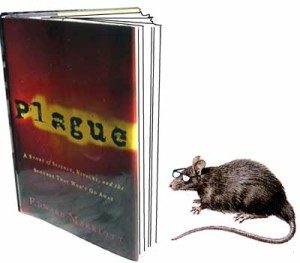
©2005 UrbisMedia
One of the many curious practices that struck me during the couple of years I spent in Hong Kong was that there were two different medical systems operating side by side. Chinese medicine, with its “humors,” acupuncture, reflexology, and pharmacological recipes that can resemble garden sweepings and taste like compost, continues to service the medical needs mostly of the Chinese residents, with some brave gweilo patients. Western medicine of the sort familiar to us, with modern hospitals, advanced diagnoses and treatments, are also to be found in facilities such as Queen Mary’s Hospital.
But modern medical practice in Hong Kong has one significant difference from that we would recognize. Physicians not only write prescriptions, they also act as the pharmacies that dispense, sell, drugs. It is not too difficult to discern the potential for abuse in this arrangement. Mrs. Wang might not really need that Rx for an expensive antibiotic, but the doctor is also in the business of selling drugs.
One particular abuse of this system is exactly that—the over prescription of antibiotics in Hong Kong. Antibiotics are commonly prescribed, for example, for common colds and sniffles, for which they are virtually useless because colds are viruses. In fact, the practice is “bad medicine” because there is now a concern that Hong Kong residents may be all but immune to antibiotics and, should a bacterial infection get hold of their compromised immune systems, there might me no effective defense. On the Chinese medicine side of the equation acupuncture, moxibustion, or a prescription of boiled roots and dried bugs is no defense or remedy for bubonic plague or a nasty influenza.
Add to this that Southern China has long been incubator for new viruses. Many poor farmers live with their livestock, Chinese have a taste for exotic animals, and there are extremely high densities of population. Little wonder that we call the viruses generated there the “Asian Flu,” or “Hong Kong Flu.” More recently, SARS was nearly one of its exports.
Edward Marriott’s Plague (2002) centers on a bubonic plague outbreak in Hong Kong in 1894. Bubonic plague is a bacillus, so there was the prospect of hunting it down through microscopy and finding a cure or vaccine if its etiology could be discovered. Amazingly, the rat flea was still not identified as the culprit at this late date. Plague has been around since rats, and has had many outbreaks and much has been written about them. But what makes this account interesting is the rivalry between two epidemiological researchers, Alexandre Yersin, a reserved, humble Frenchman, and Kitasato Shibasaburo, a renowned and egotistical Japanese.
What was known was that plague was usually presaged by the appearance of dead rats. Hong Kong was producing a lot of them in 1894, especially in a section of town called Tai Ping Shan , a squalid section of filthy, crowded tenements along a steep slope. Soon after, when the rats were all dead and their fleas needed something else to bite, people started showing the characteristic “buboes,” high fevers, and then horrible deaths and the black tongues that gave the disease its name of “The Black Death” in the 14 th century. Bubonic can mutate into pneumonic plague, a communicable, and hence more virulent by-product.
In Marriott’s stirring account there is also the ubiquitous scourge s of bigotry, politics and racism at play in Hong Kong. Kitasato was warmly welcomed by the British medical authorities (this was nearly fifty years before the Japanese invaded Hong Kong, and the Japanese were highly regarded). Yersin, however, was French; enough said. The British medical officer stonewalled him at every turn. Yet Yersin was the only one who apparently had any real concern for the Chinese. He had done research in Burma, where he learned the language. The British abused Chinese patients, at one point sequestering them in a filthy derelict ship in the harbor.
Nevertheless it was Yersin, doing research almost entirely on his own (he even had to steal cadavers because the British would not release them to him) who isolated the bacillus. Kitasato, with his large staff, access to cadavers, and a large laboratory in the west end of Hong Kong called Kennedy Town, claimed to have first discovered the bug, but it turned out he had jumped the gun so he could submit his findings to a medical journal and add to his renown (the journal later had to print a retraction). Yersin developed a vaccine, but it did not prove very successful.
Today there are still outbreaks of bubonic plague, even in the USA, but mostly in the Third World. Contemporary antibiotics are capable of controlling the disease, if one has not developed an immunity to antibiotics.
I have read other works on bubonic plague, notably Defoe ( A Journal of the Plague Year ), and Zinser ( Rats, Lice and History ), but this book came closer to home for me—at least the home I had in Hong Kong in 2000-2001. It turns out that Tai Ping Shan Street (Big Peace Mountain Street) is still there, about four blocks from the apartment I rented. In fact, I had often walked through it on my way to the nearby Man Mo Temple and the antique shops in the vicinity. Henceforth, in addition to not getting juiced up on antibiotics by Hong Kong doctors, I’ll keep a sharp eye for any dead rats.
___________________________________
©2005, James A. Clapp (UrbisMedia Ltd. Pub. 3.3.2005)
